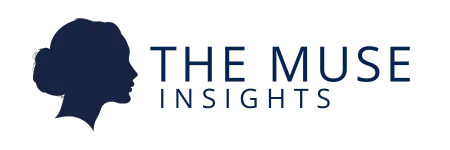A Simple Shift That’ll Help You Get More Done (Without Working More)
If you’re feeling behind no matter how much you work, let me offer a reframe: don't work more or harder - instead, work with your energy.
One of the most common problems I see with founders, creatives, and small teams is that their schedule looks full… but their day feels like a blur. It’s a mix of meetings, to-dos, random DMs, “quick” tasks, and half-finished deep work.
By the time the day ends, you’re drained, but unsure where your time went.
The fix? A smarter work structure. And today, I want to walk you through a system I call Energy-Based Batching.
Why Most Productivity Advice Falls Flat
Time-blocking. Pomodoro. Color-coded calendars. We’ve heard them all.
The issue isn’t the method, it’s that they don’t account for your mental energy. They assume your brain is a machine that performs at the same level all day.
Spoiler: it doesn’t.
Your focus dips, your energy shifts, and your capacity to make good decisions changes throughout the day.
So instead of trying to do every task at any time, what if you matched each task with the right time—based on how your brain naturally works?
That’s what this system does.
The Core Idea: Batch by Energy, Not Task Type
Most of us batch tasks by category:
→ Emails in the afternoon
→ Meetings on Thursdays
→ Admin on Mondays
But the truth is, those categories don’t reflect how you show up mentally.
What if instead, you batch your work based on how much cognitive effort each task needs?
Here’s a simple way to break it down:
High Energy Tasks: strategic thinking, content creation, decision-making
Medium Energy Tasks: project updates, admin execution, reviews
Low Energy Tasks: checking messages, organizing files, simple replies
By aligning task energy with your natural energy windows, you protect your focus when it’s the sharpest - and avoid forcing brain-heavy work when you’re already tired.

How to Set This Up
This doesn’t require fancy tech or a long setup. Just follow these 5 simple steps.
1. List Out Your Weekly Tasks
Grab a piece of paper (or open Notion, Google Docs, etc.) and list 10–15 recurring things you do each week.
Include both deep work and little stuff - emails, planning, writing, calls, etc.
2. Label Each Task by Energy
Go through your list and ask: how much brainpower does this take?
High = You need to be sharp, alert, and focused
Medium = Requires attention but not a ton of creativity
Low = You can do it even when a bit tired or distracted
Label each task H, M, or L.
3. Identify Your Natural Energy Curve
Most people have 2–3 windows where they’re at their best.
For example:
Morning: fresh and focused
Midday: still solid, but less creative
Afternoon: brain slowing down
Think about when you feel most “on.” That’s your high-energy window. Protect it.
4. Batch Your Tasks Into Your Calendar
Now that you have the labels and the timing, plug them in.
High energy tasks go into your best window (often mornings)
Medium energy tasks in the middle of the day
Low energy tasks later in the day when you’re winding down
Don't forget this: block 30-minute buffers between batches to help reset. It can be for a quick lunch break or a walk.
5. Stick to It For 1 Week
This is where most people fall off because they don't test the waters long enough to reassess. Try it for one week and notice:
Which blocks felt easy?
When did you resist a task?
What needs to shift?
This system is meant to support you, not restrict you. So if you feel like changing anything, tweak as needed.
Why This Small Shift Works So Well
When you match energy to task, you reduce friction. You don’t waste time trying to force creativity when you’re drained - or waste your best hours on admin.
Some benefits you’ll feel:
Faster decision-making during your peak hours
Less fatigue by the end of the day
Better creative output when focus is highest
Clearer boundaries between deep work and shallow work
And yes, you’ll actually finish more in less time - because your brain isn’t constantly switching gears.
What If You Lead a Team?
This works for teams too. Share the energy-batching concept with your team and help them:
Define their energy windows
Block deep work periods
Stack low-energy meetings in the right slots
You’ll see fewer miscommunications, more thoughtful work, and better collaboration.
Some of you might be asking...
What if my day’s full of meetings?
Then this is especially for you. Protect at least 1 high-energy block (even 60–90 minutes) 2–3x a week. You’ll feel the difference immediately.
Can I do this with a paper planner?
Yes. All you need is awareness of your energy AND your task list. Use color coding if you want, but keep it simple.
Does this work if my energy varies a lot day to day?
Absolutely. That’s why we don’t “lock” the plan. It’s flexible. Use your check-in each morning to decide which batch you lean into that day.
Try This Today
You don’t need to overhaul your calendar. Just take one small step:
List 5 tasks
Label by energy
Rearrange 1 day this week using this system
This isn’t about squeezing in more or doing things faster. It’s about designing your work around your brain - so you can show up more present, more focused, and less burnt out.
Let me know how it works out!

